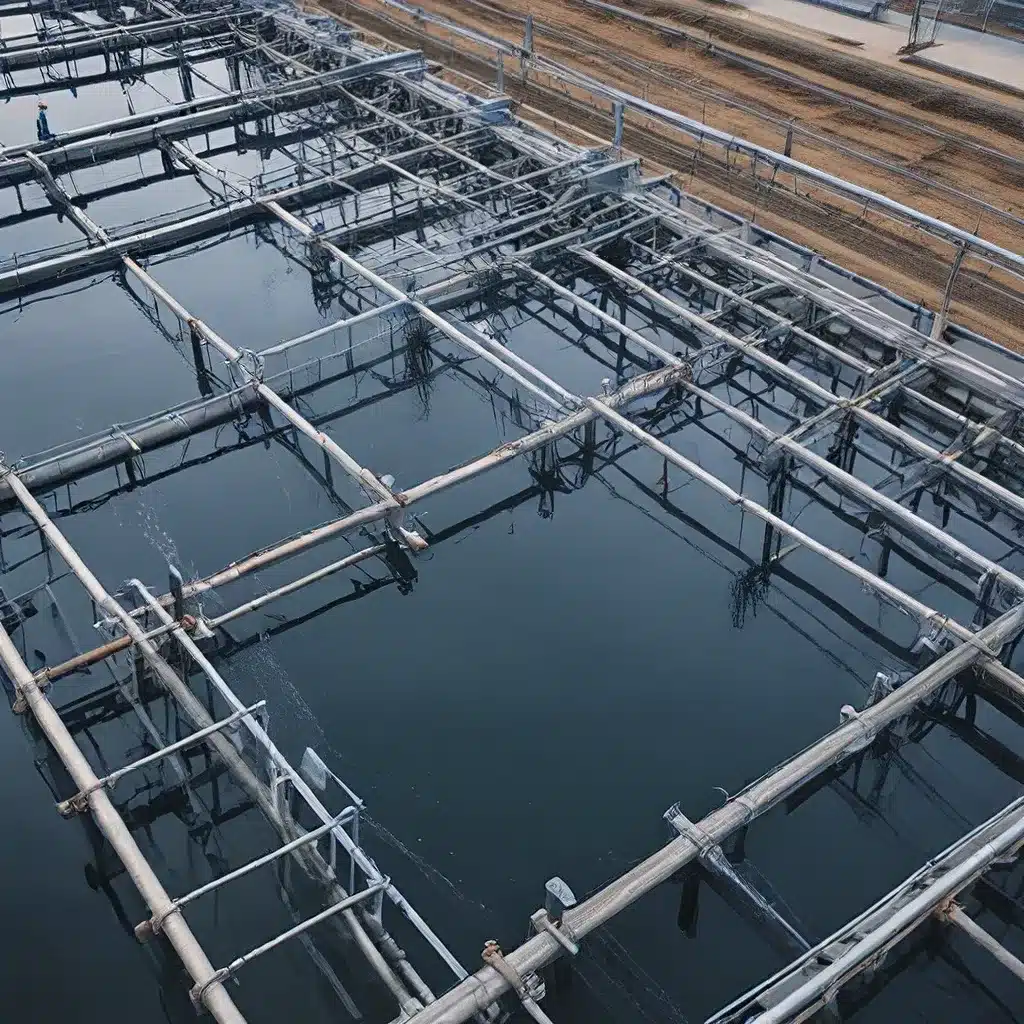
Uncovering the Secrets of Sustainable Water Management
As the world grapples with the daunting challenges of water scarcity, a quiet revolution is brewing in the water treatment industry. Gone are the days of outdated, inefficient practices – today, a new generation of innovators is redefining what’s possible, armed with cutting-edge technology and a deep understanding of global water issues.
Bain & Company’s analysis reveals that the global water industry is a $770 billion market, growing at a rapid 3.5% annually. And the oil and gas sector, long considered a water-guzzling behemoth, is now leading the charge towards more sustainable solutions.
Tackling the Water Crisis, One Oilfield at a Time
I recently had the privilege of speaking with Roberto Nava, a partner at Bain & Company’s Energy & Natural Resources practice. He shared a fascinating story about Shell’s innovative approach to water treatment in Oman.
“In the Nimr oilfield, Shell worked with the Omani government to develop an industrial wetland system to process over 100,000 cubic meters of used water every day,” Nava explained. “This water would have otherwise needed to be injected into deep well aquifers, a costly and energy-intensive process.”
The Nimr wetlands, a sprawling network of sloping fields and evaporation ponds, represent a masterclass in sustainable water management. By harnessing the power of natural filtration and evaporation, Shell was able to transform contaminated wastewater into a valuable resource – one that could be safely reused or discharged back into the environment.
But the Nimr project is just the tip of the iceberg. Nava believes that leading oil and gas companies are now taking a more holistic approach to water management, integrating it into their overall business strategies.
“These companies are continuously assessing their water risks and developing a deep understanding of their water needs across the value chain,” he said. “They’re investing in innovative projects, forging partnerships with NGOs, and working closely with local stakeholders to address water scarcity issues.”
Unleashing the Power of Collaboration
One of the most striking insights from Nava’s research is the crucial role that collaboration plays in successful water management initiatives. He pointed out that in many cases, oil and gas companies are the only players with the necessary capabilities, resources, and motivation to tackle water scarcity.
“By partnering with national oil companies, investors, and local communities, these international oil companies are able to leverage their unique expertise and deliver tangible solutions,” Nava explained. “And in doing so, they’re not only ensuring the sustainability of their own operations, but also strengthening their relationships with key stakeholders.”
McKinsey’s research on the construction industry suggests that a collaborative, cross-functional approach is essential for driving innovation and productivity. And it seems that the water treatment sector is taking a page from this playbook.
Embracing Cutting-Edge Technologies
But collaboration is just one piece of the puzzle. The water treatment industry is also witnessing a technological revolution, with companies harnessing the power of advanced analytics, automation, and even artificial intelligence to optimize their operations.
“The opportunities are endless,” said Sasato Atomic, a water treatment expert whose LinkedIn profile boasts an impressive array of technical expertise. “From real-time monitoring and predictive maintenance to automated decision-making and intelligent water distribution – the future of water treatment is undoubtedly digital.”
Atomic’s enthusiasm is palpable, and it’s easy to see why. These cutting-edge technologies have the potential to dramatically improve the efficiency, reliability, and sustainability of water treatment systems, ultimately driving down costs and environmental impact.
Overcoming the Challenges of Water Scarcity
Of course, the road to a more sustainable water future is not without its challenges. As Nava pointed out, water risks can have serious implications for businesses, including interruptions in operations, increased expenses, and even reputational damage.
“The Middle East and North Africa are among the most water-stressed regions in the world,” he said, citing Bain’s research. “And the OECD estimates that water-related losses could limit economic gains and contribute to a 6% decline in global GDP by 2050.”
These stark figures serve as a wake-up call, underscoring the urgency of addressing water scarcity issues. But Nava remains optimistic, noting that the oil and gas sector’s unique strengths – its engineering expertise, access to investment funds, and global footprint – position it well to lead the charge.
A Future of Abundant, Sustainable Water
As I reflect on my conversation with Nava and Atomic, I’m struck by the sense of excitement and possibility that permeates the water treatment industry. It’s a far cry from the dry, technical discussions of the past, replaced by a deep understanding of the global water crisis and a genuine passion for finding solutions.
And at the heart of this transformation lies a fundamental shift in mindset. Water is no longer seen as a necessary evil, a resource to be exploited and discarded. Instead, it’s being recognized as a precious, finite commodity that requires careful stewardship and innovative thinking.
From the lush, verdant wetlands of Oman to the cutting-edge water treatment facilities of the future, I can see the outlines of a world where water is abundant, sustainable, and equitably distributed. It’s a future that’s being shaped by the visionary leaders and passionate innovators who are redefining the very nature of water treatment.
So, if you’re feeling thirsty for change, I encourage you to explore the Inland Waters website. There, you’ll find a wealth of insights, resources, and inspiration – a testament to the transformative power of water.


